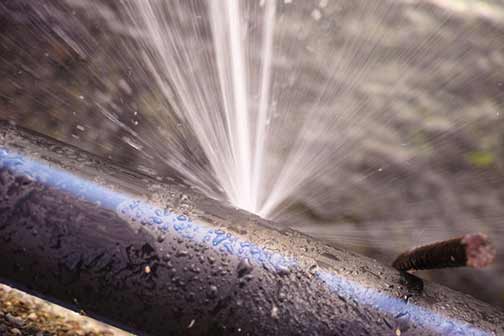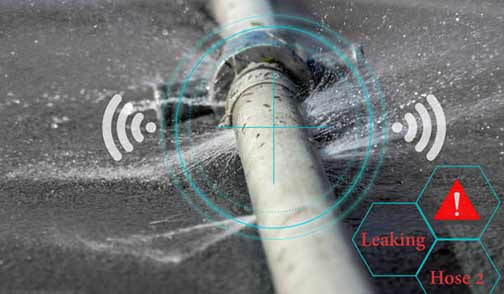
Water line leaks can be a severe issue for homeowners, leading to excessive utility bills, potential water damage, and even foundation damage if not addressed. It is essential to identify such leaks at an early stage to make sure there is little damage and judicious utilization of water resources. By detecting leaks at an early stage, homeowners can conserve money, conserve water, and protect their property from extensive damage. Below is a step-by-step guide on how to effectively detect and repair suspected water line leaks for homeowners.
Early detection of water line leaks is not only a matter of money-saving; it is a matter of protecting the integrity of your house. Water, if not controlled, will find its way into the foundations, compromise structural components, and initiate mold growth, which is a health hazard. Further, the environmental effect of wasted water cannot be overstated. As homeowners, having the responsibility of detecting leaks early assists in the conservation of this precious water resource and lessens the environmental footprint of water treatment and distribution.
Recognizing the Signs of a Water Line Leak
One of the first signs of a main water line leak is recognizing the symptoms that indicate there is a problem. Homeowners must be on the lookout for the following:
- Unusually High Water Bills: A sudden increase in your water bill without a corresponding increase in water usage can be a red flag for a leak. This discrepancy often goes unnoticed until the bill arrives, making it crucial to monitor your water usage regularly.
- Water Meter Fluctuations: Check your water meter for inexplicable variations. If the meter continues to run even when all water sources are turned off, it may indicate a leak. Your water meter needs to be checked regularly in order to catch leaks in their early stages, before they escalate into larger problems.
- Wet or Damp Spots: Inspect your lawn for damp spots or sections of lush vegetation, which could be caused by a leak in the buried water line. These spots could be greener than other surrounding areas due to the constant supply of water, signaling a leak underground.
- Low Water Pressure: A substantial decrease in water pressure can also be a sign of a leak, as water is being redirected from the pipe instead of to your fixtures. Low pressure can impair appliance performance and make common activities like showering or doing dishes a task.
Being aware of these signs provides homeowners the ability to act fast and reduce the damage. Vigilance and proper inspection can go a long way in reducing the dangers of hidden leaks.
Conducting a Preliminary Water Leak Test
Before calling professionals, homeowners can conduct a simple test to check if there is a leak. Start by closing all water sources in the house. Take a reading of the water meter and note it. Wait for a few hours without utilizing any water and read the meter once again. If the reading is not the same, then there likely is a leak in the system. This test is straightforward and doesn’t require any special equipment, so it can be conducted by all homeowners.
Conducting the initial water leak test is a simple foundation of the leak detection procedure. It helps to validate the suspicion and acts as the basis for further investigation. Homeowners can proceed with more specific methods to locate the source if the test indicates a leak.

Locating the Leak Source
If a leak is found, the second step is to locate its origin. This can be challenging if the leak is underground. Homeowners can try using the following methods:
- Visual Inspection: Visually inspect all exposed pipes, fixtures, and connections for signs of leaks, i.e., dripping water or water pooling. This is helpful for exposed pipes and fixtures, where leaks are typically visible to the naked eye.
- Listen for Sounds: Leaks can sometimes be detected by listening for sounds of running water or hissing noises, especially on walls or floors. This method requires a quiet environment and patience but can be very effective at detecting where a leak is.
- Use Dye Testing: Toilets can be tested by putting some drops of food coloring in the tank and waiting to see if it appears in the bowl without flushing. This can indicate a leak in the toilet system. Dye testing is simple and will reveal leaks that would not otherwise be visible.
Locating the source of a leak is an activity that requires patience and sharpness in observation. Homeowners should be patient and use more than one method to determine accuracy. Professional underground leak detection services might be required if the source cannot be identified to avert continued damage.
Engaging Professional Help
If the source of the leak is hard to locate or the leak is extensive, it’s optimal to seek the help of a professional. Plumbers have the expertise and equipment to locate and repair leaks efficiently. They can use advanced techniques such as video camera inspections and acoustic leak detection to determine the exact location of the leak.
Employing professional services not only ensures that the leak is attended to in a proper manner but also provides peace of mind. Professionals are able to examine the entire plumbing system and identify potential weaknesses that may not be seen by homeowners. Their services are worth acquiring to prevent future leaks and to ensure the longevity of the plumbing system.
Preventive Measures to Avoid Future Leaks
Prevention is always better than a cure. There are several measures homeowners can take to minimize the chances of future leaks:
- Regular Maintenance: Get your plumbing system inspected and maintained regularly to detect any potential issues beforehand. Regular maintenance can prevent small problems from turning into big leaks.
- Monitor Water Pressure: Maintain your home water pressure at the recommended level to prevent pipes from becoming stressed. High pressure can cause pipes to burst and subsequent water loss and damage.
- Insulate Pipes: Insulate exposed pipes to prevent them from freezing and bursting during cold weather. Pipe insulation is a simple yet effective measure to prevent leaks caused by temperature fluctuations.
Preventive maintenance plays a crucial role in reducing the risk of water line leaks. By intervening early, homeowners can rescue their property and conserve water, thereby contributing to a sustainable future.
Understanding the Impact of Water Leaks on the Environment
Water leaks also incur an environmental cost in addition to the economic cost to homeowners. Wasted water from leaks contributes to local water scarcity and the carbon footprint of water treatment and distribution. Homeowners can help conserve water and reduce their environmental impact by identifying and sealing leaks promptly.
The environmental impact of water leaks is staggering. Every drop of water wasted through leaks adds to the strain put on local water resources, which in most regions are already scarce. Additionally, energy used in water treatment and distribution translates into greenhouse gas emissions. By repairing leaks, homeowners can play a vital role in water conservation and carbon footprint minimization.
Conclusion: Taking Proactive Steps for Leak Management
Leak detection and repairing of main water lines are a very important activity for homeowners. By staying vigilant for the signs of leaks, conducting preliminary tests, and summoning professional help when necessary, homeowners can protect their property and conserve valuable water resources. Taking preventive action also ensures the longevity of the plumbing system and minimizes future leak possibilities. By conducting these proactive activities, homeowners can rest easy and contribute towards a more sustainable tomorrow.
Being proactive when it comes to leaks is not only beneficial to a homeowner individually, but to the environment and society as well. By reducing water wastage and preventing damage, homeowners are contributing towards the general well-being of their environment. Individually small, but collectively these steps go a long way in promoting sustainability and conservation of the environment.

